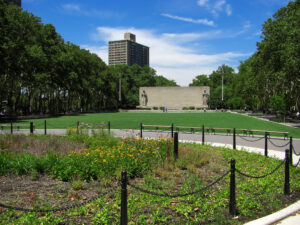Summer can be a smelly challenge – an expert from SUEZ explains how to deal with odorous pollutants with warm weather set to stay.
The summer months bring a variety of new smells – coconuts, freshly mown grass, and BBQs – these are the nice ones. Unfortunately, this time of year also brings an increase in the less pleasant aromas and what we have noticed is that the public’s awareness and sensitivity to nuisance odours has risen exponentially.
Considering all atmospheric pollutants, odorous pollutants are the major cause of resident complaints to local authorities and regulatory bodies. They can be associated with a wide range of activities including food processing, waste handling, anaerobic digestion, wastewater, and sludge treatment as well as the application of solid materials to land. These odours can have a substantial negative impact on those living and working nearby.
From an odour perspective, increased urbanization, and subsequent encroachment of residential developments into previously non-residential areas causes as a significant challenge for governing bodies, environmental regulators, as well as facility owners and site operators. Odours generated by site operations negatively impacts the amenity of those nearby residents. The growing social pressure and heightened community expectations has resulted in a demand for more solutions to deliver effective control of airborne pollutants.
Conventional pollutants, such as traffic derived emissions, are not typically perceived by the population, even if they might be harmful for human health, whereas the population are far more receptive to odorous compounds, which can be detected even at low levels. For these reasons, odours are nowadays subject to control and regulation. There is a requirement for specific methods for odour measurement and control. Permit conditions, managed by regulatory bodies, include the prevention of odour using best available technologies, as well as impose the requirement for a site-specific odour management plan.
As the year progresses and we start to enjoy being outside, the warmer temperatures are creating a favourable environment for odorous compounds to multiply. The heat also generates an energy reserve for odour-causing molecules which assists with the transformation of liquid and solid phase molecules into the gaseous phase, subsequently diffusing into the atmosphere. This goes hand in hand with the fact that warmer and humid conditions intensify the growth of odour producing bacteria and stagnant conditions. Interestingly, studies also suggest the olfactory receptors in our noses become sensitively heightened during warmer climates. Thus, summer can be a smelly challenge.
Having a robust odour management plan (OMP) in place is key and, where necessary, investing in services and solutions that can offset the adverse impacts of odours. The OMP is developed to manage and mitigate the potential impact of odours from site operations. It should be supported by a comprehensive diagnostic and monitoring study that defines the magnitude and risk of odorous compounds of the facility in question. This study ensure that the measures and interventions imposed by the odour management plan meet the size of the risks.
There are further physical interventions and smart systems that can be introduced to strengthen the response to bad smells. Gas treatment systems follow the principles of confinement and elimination. Depending on the site dynamics this can include cover systems, biofilters, chemical scrubber units, and/or barrier systems. Smart solutions such as real time air quality monitoring networks create cohesion between site operations, regulators and residents. The system strengthens a site’s management by pre-empting favourable conditions for odour events and ensures a transparent communications stream which can be used to determine the likely cause of odourous events.
The SUEZ Smart and Environmental Solutions (SES) Air & Climate Division has developed a global approach for the management of air quality and has been offering solutions for reducing atmospheric pollution and odorous emissions for more than 20 years. The SUEZ AirAdvanced® offer consists of a wide range of services and solutions covering the entire value chain, from diagnosis to design and implementation of odour treatment solutions, and real-time air quality monitoring with predictive modelling and data analysis.
SUEZ has a longstanding experience with a broad portfolio of solutions incorporating both in-house technologies and technologies from an extensive ecosystem of strategic partnerships. This service offering ensures the most relevant and proven solutions to mitigate the impact of odorous emissions are instructed.
To find out more how SUEZ can help prevent a smelly summer in your environment, contact Craig Lewis, Air Quality Consultant, craig.lewis@suez.com.

















Leave a Reply